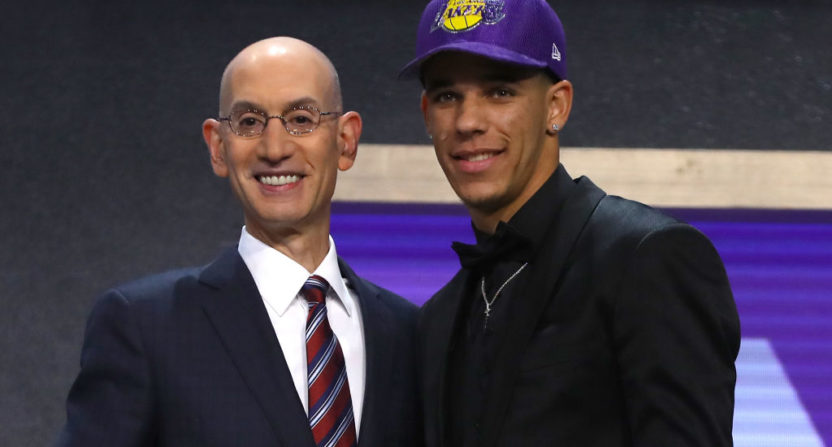How did your team do on draft night? It’s easier than ever to find draft grades to tell you how good or bad each pick was, or how well or poorly each team performed.
These grades provide the perfect blend of brevity and simplicity for mass consumption on social media, and nearly every sports publication covering the NBA or NFL puts out a report card. Draft grades are also almost entirely meaningless; a single set of draft grades is about as likely to predict the future as Stephen A. Smith is likely to correctly pick the winner of the NBA Finals.
Recent history is littered with examples of draft grades that aged horribly. Sports Illustrated awarded a respectable B- to the Brooklyn Nets after the 2014 NBA Draft for bringing in Markel Brown, Xavier Thomas, and Cory Jefferson with a trio of second-round picks. Only Brown ever made it to the Nets’ NBA roster, lasting just two seasons before being cut. Brooklyn’s 2014 draft class almost certainly deserves an F in hindsight.
The latest
Even this year, it’s easy to find examples of draft grades that will probably soon look silly. One of the most polarizing picks in this year’s draft was the Chicago Bulls’ selection of Lauri Markkanen at No. 7, made after acquiring that pick from the Timberwolves in the Jimmy Butler trade. CBS Sports and The Ringer each gave Markkanen high marks in their pick-by-pick analyses, but Fox Sports and Sports Illustrated sharply disagreed by giving the Bulls an F for their overall performance after Chicago sold No. 38 pick Jordan Bell to the Golden State Warriors.
Though both deals will be hotly debated until the NBA season tips off, it’s easy to imagine either side being right. Markkanen could blossom in Chicago while Bell never overcomes his injury history, Bell could star as Markkanen flops, or both could simply muddle along as serviceable rotation players. Whatever the outcome, draft grades for the Bulls probably won’t look good in hindsight.
Inconsistencies, such as the sharp difference in grades for the Bulls, are commonplace in draft grades and call their validity into question.
For the 2017 NFL draft, Pete Prisco of CBS Sports awarded the Arizona Cardinals an A while Dieter Kurtenbach handed the franchise a B-. Prisco loved that Arizona drafted linebacker Haason Reddick with its first-round pick, calling the Temple product “a future star … (who) will add speed and versatility to their defense.” Kurtenbach, meanwhile, called the selection “head-scratching” while asking if the Cardinals “really need a linebacker?” Depending on whose report card you read, Arizona either had a great draft or simply an average one, and that assessment largely hinged on whether linebacker was a position of need.
But analyzing draft choices from different sets of assumptions is only a problem when there’s analysis present — in many cases, there isn’t. Kurtenbach gave the Patriots an A+, mainly citing coach Bill Belichick’s track record in past drafts, despite New England not picking in the first two rounds. Prisco uses “love” on eight different occasions in his report card, often with little explanation about why a player or pick is so lovable.
Pick-by-pick grades manage to be even more perplexing. Prisco gave the Cleveland Browns a B+ for drafting Myles Garrett first overall, vaguely noting “there are concerns.” There’s simply no logic to that grade. If Garrett is the consensus best player, how do the Browns not earn an A+ for drafting him? Or maybe taking the best player first is simply average and merits a C. Either can be argued for, and neither is a B+.
Despite its flaws, the draft grade could be turned into a useful tool by a draft prognosticator willing to put in sufficient time and effort. There needs to be a consistent method for assessing the value of taking a certain player at a given pick — is he a reach or a steal? — as well to determine if that player fills a position of need for his new team. The whole process should be Nate Silver-ized.
Until then, don’t put too much stock in draft grades. Hope springs eternal on draft night regardless of whether your team got an A or an F.







